How to Build an Office Post-Pandemic
- Youtube Views 94,244 VIDEO VIEWS
This video and article contain paid promotion for Aviva Investors.
THEY'RE where 60% of us spend our working lives and they can take all kinds of forms.
But in 2021 the concept of the office is being dramatically reimagined.
As the pandemic forced remote working, the home office came to prominence, quickly followed by what felt like endless articles and opinion pieces as we all tried to work out the new normal.
But despite the noise - and the temptation for some firms to shift permanently to remote working – the pandemic has actually underlined the importance of offices for many firms and their teams as spaces critical for creativity, knowledge sharing and collaboration.
Face-to-face interaction between humans builds long term trust and rapport in a way that remote working doesn’t, and those things are the very foundation of effective team working; they’re the building blocks of creativity.
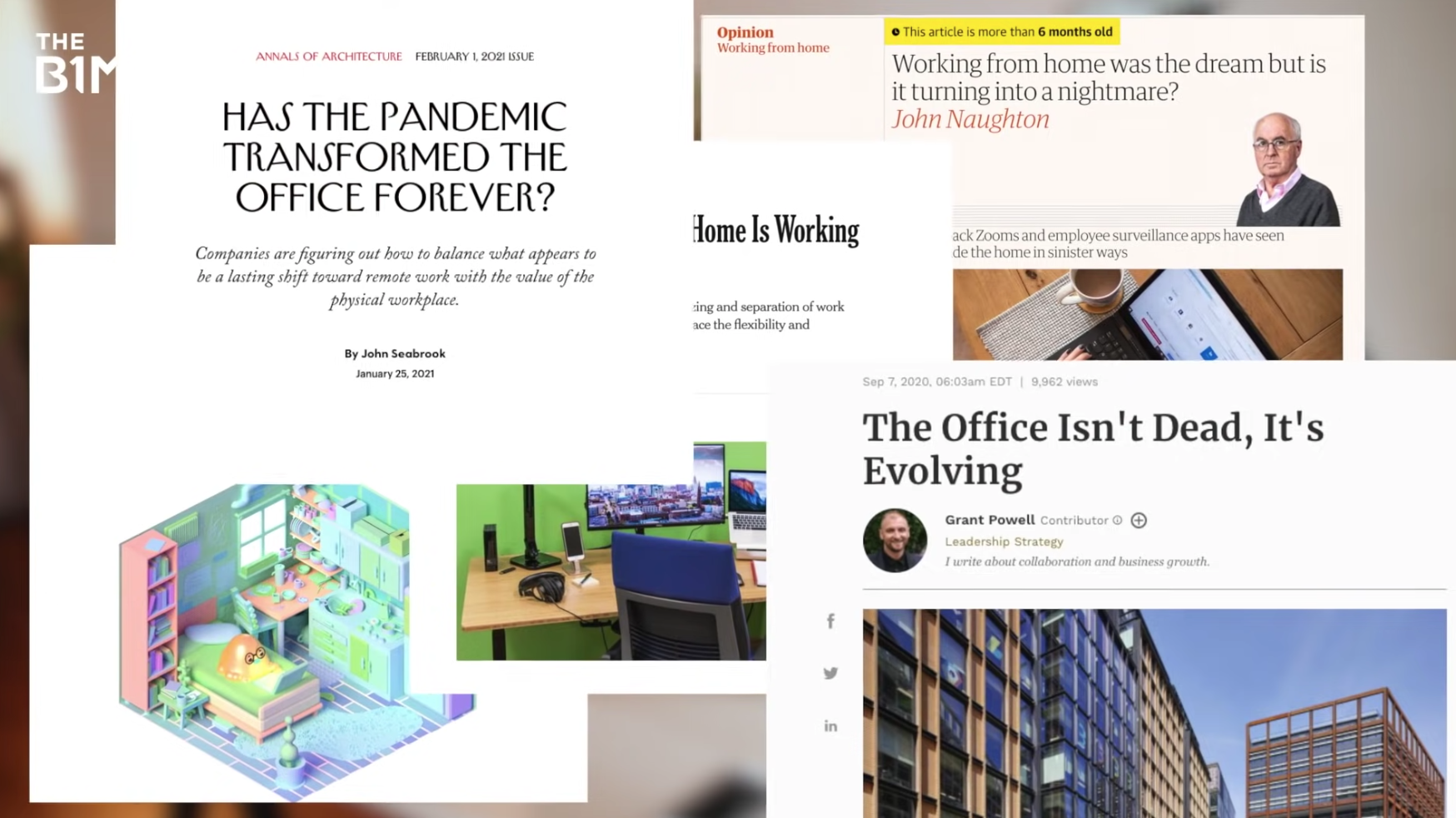
Above: We're all trying to work out the new normal.
Remote working has drawn attention to and ultimately helped advance trends that many young people and arguably more progressive organisations already knew; particularly when it comes to where and how we work, the hours we keep, what talented people really want from a workplace and how we develop trust with our colleagues.
Now the concept of the office is on the brink of a renaissance and while some social distancing measures will rightly be in place for a period to keep us safe, these spaces could be about to finally fulfil their ultimate potential.
This is your new and updated definitive guide on how to build an office, after COVID-19.
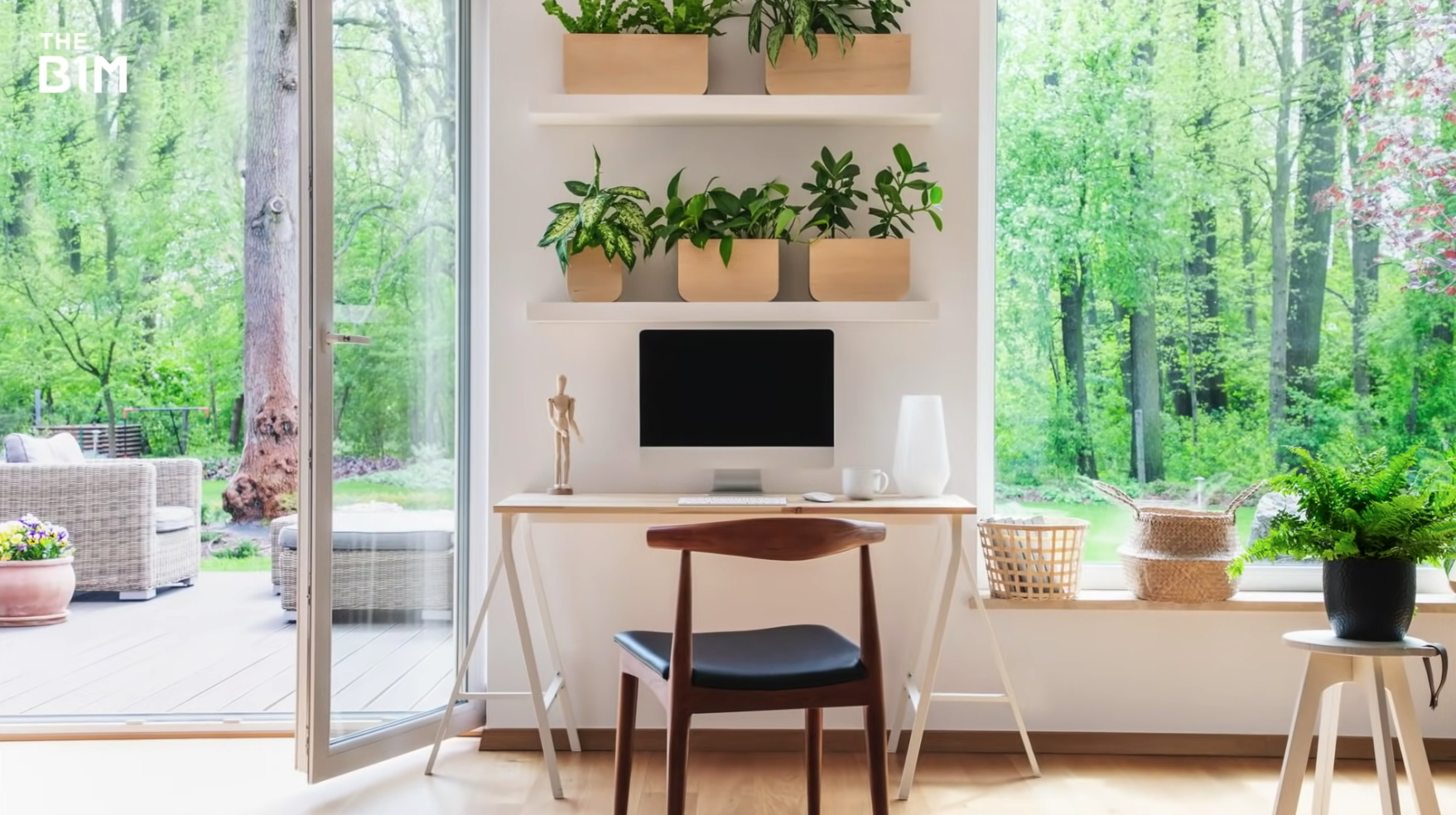
Above: The remote working of 2020 and 2021 has seen the home office come to prominence.
An office is officially defined as “a room, set of rooms, or building used as a place for commercial, professional, or bureaucratic work” – but we all know they’re much more than that.
The location, layout, size, appeal, atmosphere, dimensions and effectiveness of offices all matters and - while business types differ - this complex mix of ingredients must be carefully calibrated. If done well, your office will be a powerful tool boosting productivity, and in attracting and retaining the best talent.
Historically, offices were a kind of factory for repetitive and often administrative work - but the shift towards a knowledge economy means different environments are now needed.
In the first two decades of the 21st Century we began to realise that office environments really matter - but we still carried the baggage of the office’s heritage. The renaissance of 2021 is an opportunity to finally shake that.
So, what does it now take to build a hit office? Here are the key things to consider.
1. LOCATION
Choosing the right location, before even considering the building itself, is critical.
A successful office needs to be in a place that the talent you want to attract can easily travel to and picking a location that’s well-connected will give you access to the largest talent pool possible.
Industry clusters are now driving economic growth in many cities. Situating your business in a district bustling with similar firms will give you easier access to information, technology and talent; helping to raise productivity.
2. APPEAL
Location alone isn’t enough. Your building needs to be somewhere that your team actually wants to visit.
Highly-skilled people want more just a place to work. They need places to connect, grab a coffee, share ideas and escape to.
Inside an office itself, appeal is critical. Irrespective of social distancing, the days of battery-hen style cellular offices or grim endless rows of desks are over.
Now, agility is key. Just like in our homes, we need different environments for different activities. Teams need spaces where they can form organic, temporary hubs for projects; spaces to co-work and collaborate.
Today’s best offices are somewhere between a coffee lounge and stylish home - the decor, vibe and feel all matter.
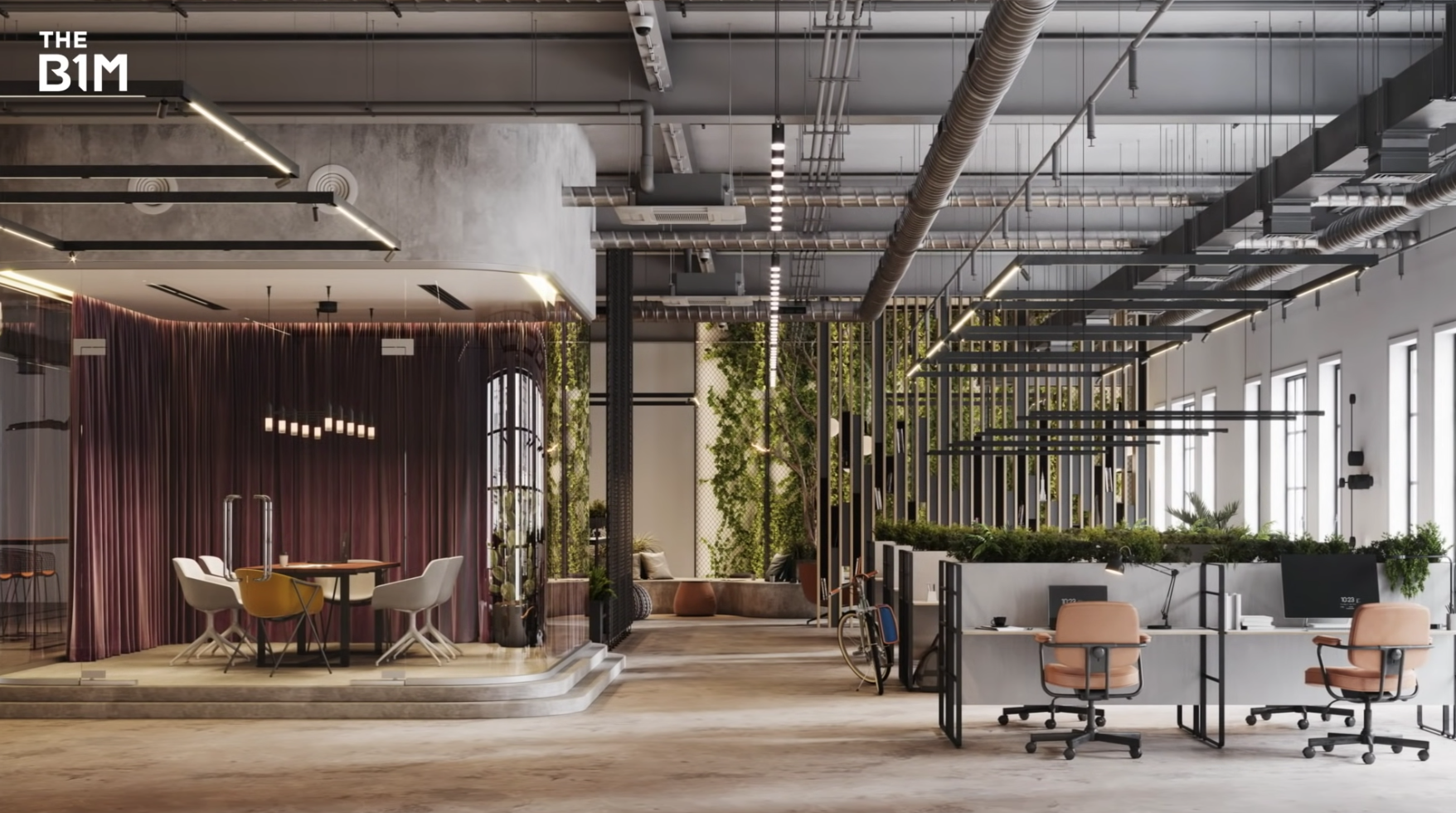
Above: Modern offices need to create a destination for teams.
Many employers used to think that their people were only “at work” when they were physically in the office - and, while that concept was beginning to fade, the pandemic has killed it entirely.
Different types of people work more effectively at different times of day - especially those in creative roles. Creating a workplace where the focus is on output rather than hours spent in the office, is a big factor in creating appeal - especially for high performing people trying to juggle childcare.
3. WELLBEING
Any organisation’s greatest asset is its people and when their wellbeing is prioritised, collaboration, productivity and profitability all improve.
Natural light exposes us to vitamin D and helps with mental balance. Architects can increase light by lowering the wall-to-window ratios of offices and by avoiding deep-plans or slightly depressing internal rooms. Atria are also a great way of introducing light and creating a focal centre.
They’re also great spaces for greenery, and planting or even entire indoor trees can help to promote mindfulness and create a good level of Indoor Air Quality - something that sound air filtration and natural ventilation strategies also support.
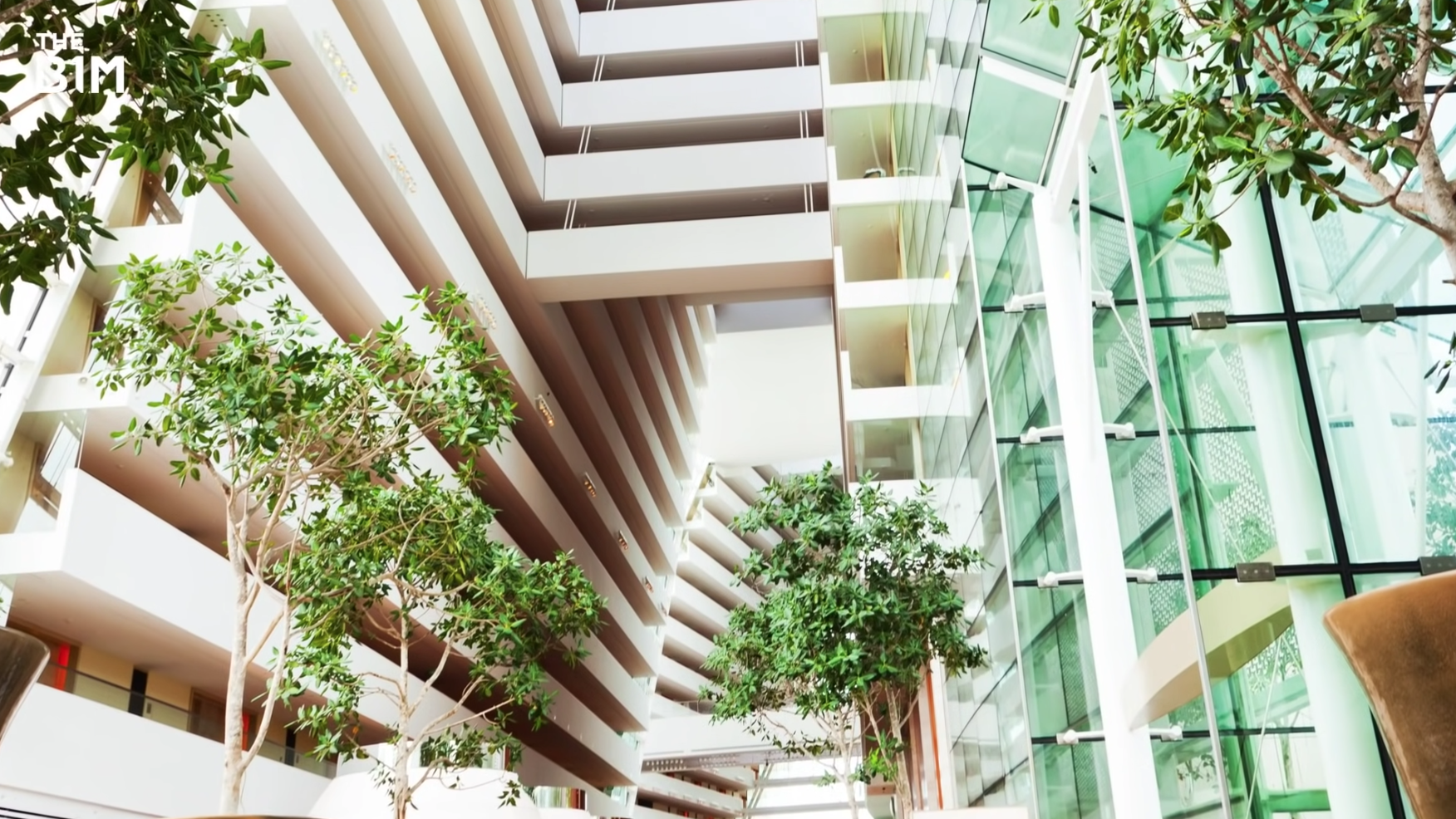
Above: Trees and planting can help to improve mindfulness.
Workstations themselves can have a huge impact on wellbeing and should be set-up in a way that supports good posture and prevents strain. Many governments around the world have regulations on how to achieve this.
Adjustable desks that enable people to stand are - quite literally - rising in popularity.
Social distancing is likely to be needed in offices for the short term and some architects have devised ways of achieving this within existing office set-ups, while others have imagined entire new offices built around the principles of social distancing; notably emphasising spaces for collaboration and team working and bringing those to the fore.
4. FLEXIBILITY
With uncertainty surrounding the pandemic, perhaps the most important thing to emerge from the 2021 office renaissance is the need for flexibility.
While the ability to adapt spaces for team working, projects or business restructures is of course needed, at a more fundamental level, building-in flexibility is key.
Structural frames that create open space which can be easily divided-up or reconfigured with non-load bearing partitions extend the life of an office building and allow them to be easily expanded in the future - avoiding the need for demolition and further re-development.
The rigid structure of New York’s Woolworth Building - once the world’s tallest skyscraper, dubbed the “cathedral of commerce” - prevented the building from adapting to the 21st century office market, and its upper floors have now been converted into apartments.
Maximising the efficiency with a structure’s floor plate is also critical for businesses and landlords.
In the wake of the pandemic, many experts predicted the de-densification of offices and a move away from high rise towers to lower rise structures.
But when it comes to maximising space on small sites and co-locating talent, high rise offices remain incredibly efficient.
In recent years, many of the benefits found in lower rise, campus-style offices have been cleverly brought into towers.
Sydney’s Quay Quarter is broken up into a series of vertical villages that are connected by atria while a rooftop garden creates an appealing and peaceful breakout space in the heart of the city.
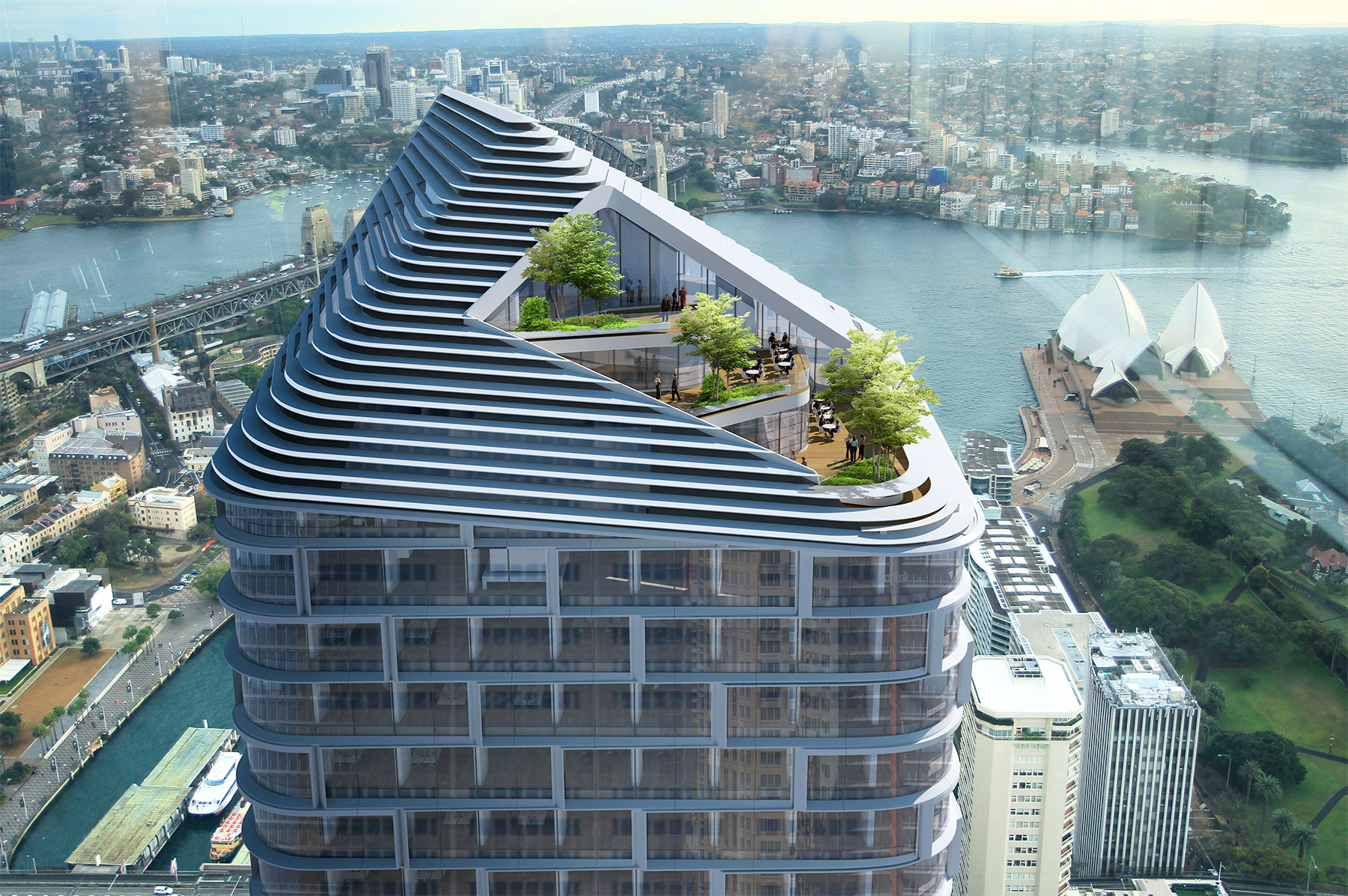
Above: Sydney's Quay Quarter Tower is a arranged as a series of "vertical villages" internally and features planted roof terraces at its summit. Image courtesy of 3XN.
San Francisco’s Salesforce Tower adopts a similar concept, directly challenging the city’s many low-rise tech campuses.
Despite the uncertainty of the past year, the fundamentals of human behaviour and of the interactions that help us build trust remain unchanged.
Far from being the death of offices, this unprecedented moment in our history will likely create a new breed of working environment - one that truly understands modern cultures and psychology - and that finally allows the spaces we know as “offices” to fulfil their true potential.
This video and article were powered by Aviva Investors. To learn more about how to construct offices, download the free Aviva Investors white paper.








